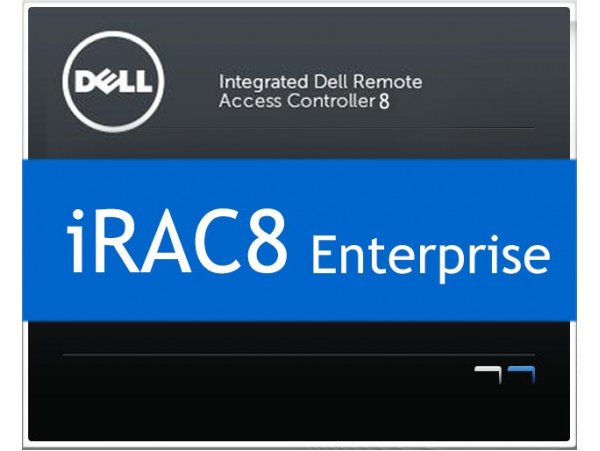-
Server
 Hãng sản xuấtTheo cấu hình
Hãng sản xuấtTheo cấu hình -
Workstation
 Hãng sản xuấtWorkstation
Hãng sản xuấtWorkstation - Storage
-
Parts
Hãng sản xuấtTheo dòng máy chủ
-
Networking
 Hãng sản xuất
Hãng sản xuất - License
-
Giải pháp

- Blog
- Thông tin
- Liên hệ
Danh mục
Dell iDRAC8 Enterprise integrated Dell Remote Access Controller
- Nhà sản xuất: Dell EMC
- Model No. (Chưa có)
- Tình trạng: Liên hệ đặt hàng
- 3.420.000 VNĐ
Giá trên đã bao gồm thuế VAT
NVKD sẽ liên hệ lại ngay
Thông tin sản phẩm Dell iDRAC8 Enterprise integrated Dell Remote Access Controller
Overview
The Integrated Dell Remote Access Controller (iDRAC) is
designed to make Server administrators more productive and improve the overall
availability of Dell servers. iDRAC alerts administrators to Server issues,
helps them perform remote Server management, and reduces the need for physical
access to the Server.
iDRAC with Lifecycle controller technology is part of a
larger datacenter solution that helps keep business critical applications and
workloads available at all times. The technology allows administrators to
deploy, monitor, manage, configure, update, troubleshoot and remediate Dell
servers from any location, and without the use of agents. It accomplishes this
regardless of operating system or Hypervisor presence or state.
Key Features
Inventory and Monitoring
- View
managed Server health.
- Inventory
and monitor network adapters and storage subsystem (PERC and direct
attached storage) without any operating system agents.
- View
and export system inventory.
- View
sensor information such as temperature, voltage, and intrusion.
- Monitor
CPU state, processor automatic throttling, and predictive failure.
- View
memory information.
- Monitor
and control power usage.
- Support
for SNMPv3 gets.
- For
blade servers: launch Chassis Management Controller (CMC) Web interface,
view CMC information, and WWN/MAC addresses.
- NOTE: CMC
provides access to iDRAC through the M1000E Chassis LCD panel and local
console connections. For more information, see Chassis Management
Controller User’s Guide available at dell.com/support/manuals.
- View
network interfaces available on host operating systems.
- View
inventory and monitor information and configure basic iDRAC settings using
iDRAC Quick Sync feature and a mobile device.
Deployment
- Manage
vFlash SD card partitions.
- Configure
front panel display settings.
- Manage
iDRAC network settings.
- Configure
and use virtual console and virtual media.
- Deploy
operating systems using remote file share, virtual media, and VMCLI.
- Enable
auto-discovery.
- Perform
Server configuration using the export or import XML profile feature
through RACADM and WS-MAN. For more information, see the Lifecycle
Controller Remote Services Quick Start Guide.
- Configure
persistence policy for virtual addresses, initiator, and storage targets.
- Remotely
configure storage devices attached to the system at run-time.
- Perform
the following operations for storage devices:
- Physical
disks: Assign or unassign physical disk as a global hot spare.
- Virtual
disks:
- Create
virtual disks.
- Edit
virtual disks cache policies.
- Check
virtual disk consistency.
- Initialize
virtual disks.
- Encrypt
virtual disks.
- Assign
or unassign dedicated hot spare.
- Delete
virtual disks.
- Controllers:
- Configure
controller properties.
- Import
or auto-import foreign configuration.
- Clear
foreign configuration.
- Reset
controller configuration.
- Create
or change security keys.
- PCIe
SSD devices:
- Inventory
and remotely monitor the health of PCIe SSD devices in the Server.
- Prepare
the PCIe SSD to be removed.
- Securely
erase the data.
- Set
the Backplane mode (unified or split mode).
- Blink
or unblink component LEDs.
- Apply
the device settings immediately, at next system reboot, at a scheduled
time, or as a pending operation to be applied as a batch as part of the
single job.
Update
- Manage
iDRAC licenses.
- Update
BIOS and device firmware for devices supported by Lifecycle Controller.
- Update
or rollback iDRAC firmware and lifecycle controller firmware using a
single firmware image.
- Manage
staged updates.
- Backup
and restore Server profile.
- Access
iDRAC interface over direct USB connection.
- Configure
iDRAC using Server Configuration Profiles on USB device.
Maintenance and Troubleshooting
- Perform
power related operations and monitor power consumption.
- Optimize
system performance and power consumption by modifying the thermal
settings.
- No
dependency on OpenManage Server Administrator for generation of alerts.
- Log
event data: Lifecycle and RAC logs.
- Set
email alerts, IPMI alerts, remote system logs, WS eventing logs, and SNMP
traps (v1, v2c, and v3) for events and improved email alert notification.
- Capture
last system crash image.
- View
boot and crash capture videos.
- Out-of-band
monitor and alert the performance index of CPU, memory, and I/O modules.
- Configure
warning threshold for inlet temperature and power consumption.
- Use
iDRAC Service Module to:
- View
Operating System (OS) information.
- Replicate
Lifecycle Controller logs to operating system logs.
- Automatic
system recovery options.
- Populate
Windows Management Instrumentation (WMI) information.
- Integrate
with Technical Support Report. This is applicable only if iDRAC Service
Module Version 2.0 or later is installed. For more information, see Generating
Tech Support Report.
- Prepare
to Remove NVMe PCIe SSD. For more information, see Preparing
to Remove PCIe SSD .
- Generate
technical support report in the following ways:
- Automatic
— Using iDRAC Service Module that automatically invokes the OS Collector
tool.
- Manual
— Using OS Collector tool.
Secure Connectivity
Securing access to critical network resources
is a priority. iDRAC implements a range of security features that includes:
- Custom
signing certificate for Secure Socket Layer (SSL) certificate.
- Signed
firmware updates.
- User
authentication through Microsoft Active Directory, generic Lightweight
Directory Access Protocol (LDAP) Directory Service, or locally
administered user IDs and passwords.
- Two-factor
authentication using the Smart–Card logon feature. The two-factor authentication
is based on the physical smart card and the smart card PIN.
- Single
Sign-on and Public Key Authentication.
- Role-based
authorization, to configure specific privileges for each user.
- SNMPv3
authentication for user accounts stored locally in the iDRAC. It is
recommended to use this, but it is disabled by default.
- User
ID and password configuration.
- Default
login password modification.
- Set
user passwords and BIOS passwords using one way hash format for improved
security.
- SMCLP
and Web interfaces that support 128-bit and 40-bit encryption (for
countries where 128 bit is not acceptable), using the SSL 3.0 standard.
- Session
time-out configuration (in seconds).
- Configurable
IP ports (for HTTP, HTTPS, SSH, Telnet, Virtual Console, and Virtual
Media).
- Secure
Shell (SSH) that uses an encrypted transport layer for higher security.
- Login
failure limits per IP address, with login blocking from that IP address
when the limit is exceeded.
- Limited
IP address range for clients connecting to iDRAC.
Dedicated Gigabit
Ethernet adapter available on rack and tower servers (additional hardware may
be required).
Xem thêm
Sản phẩm liên quan(2)
Copyright © 2025 thegioimaychu.vn. All Rights Reserved.













